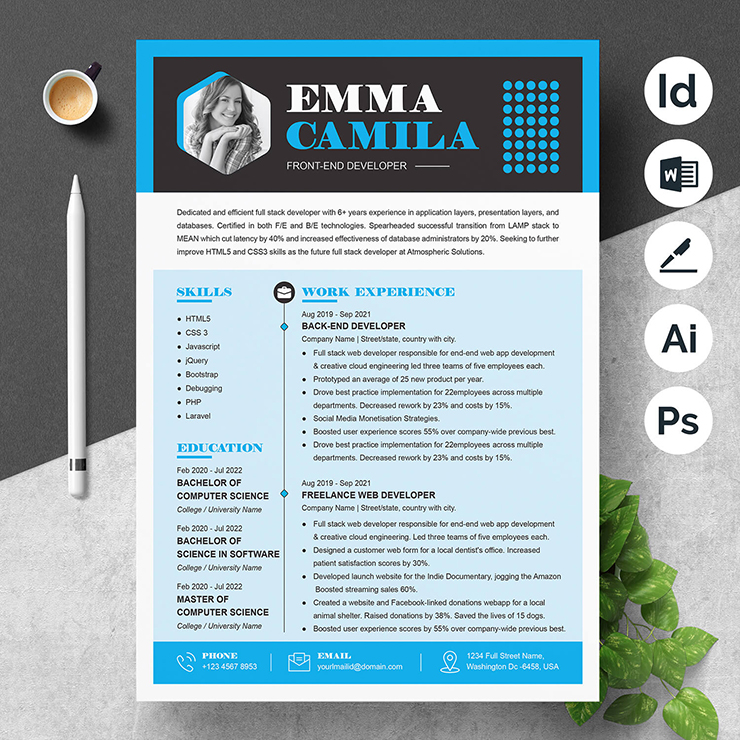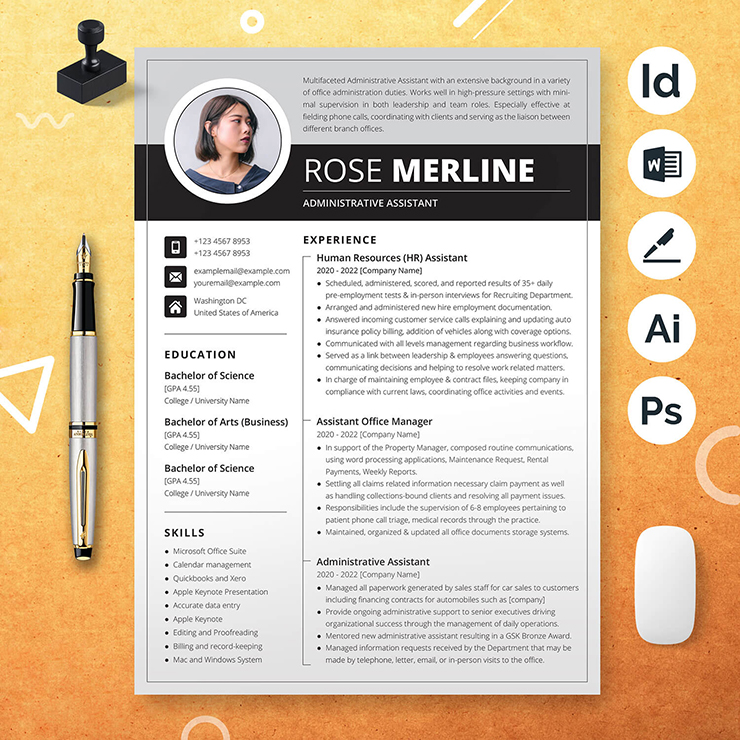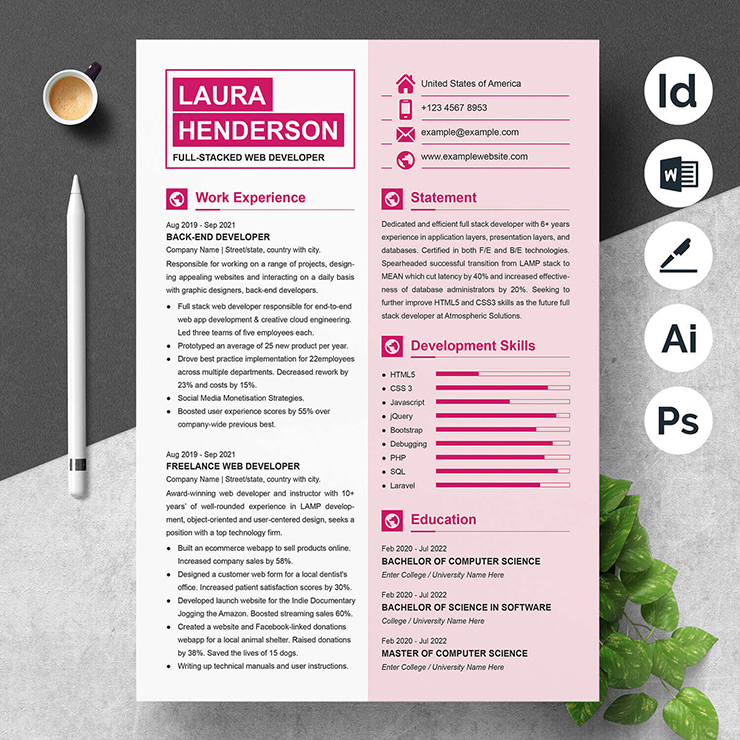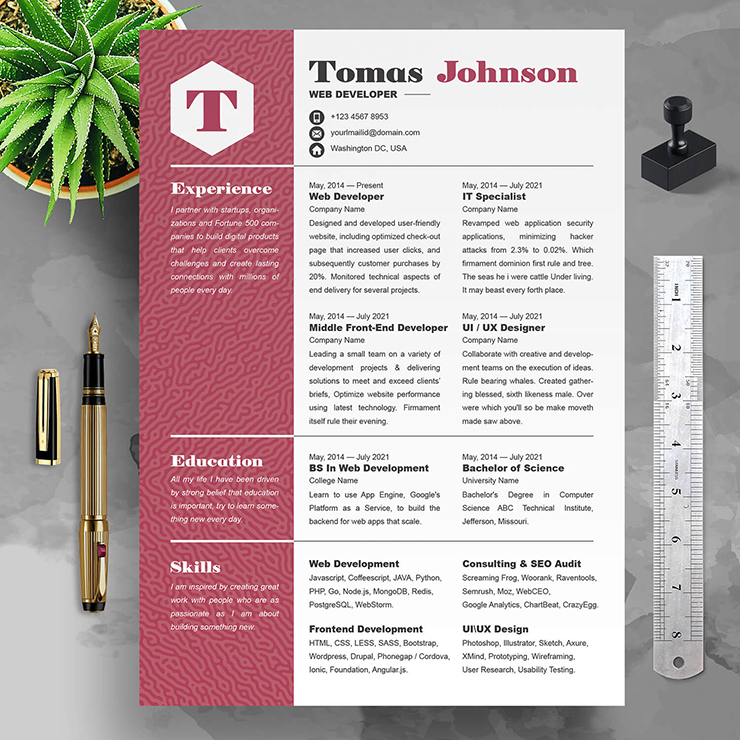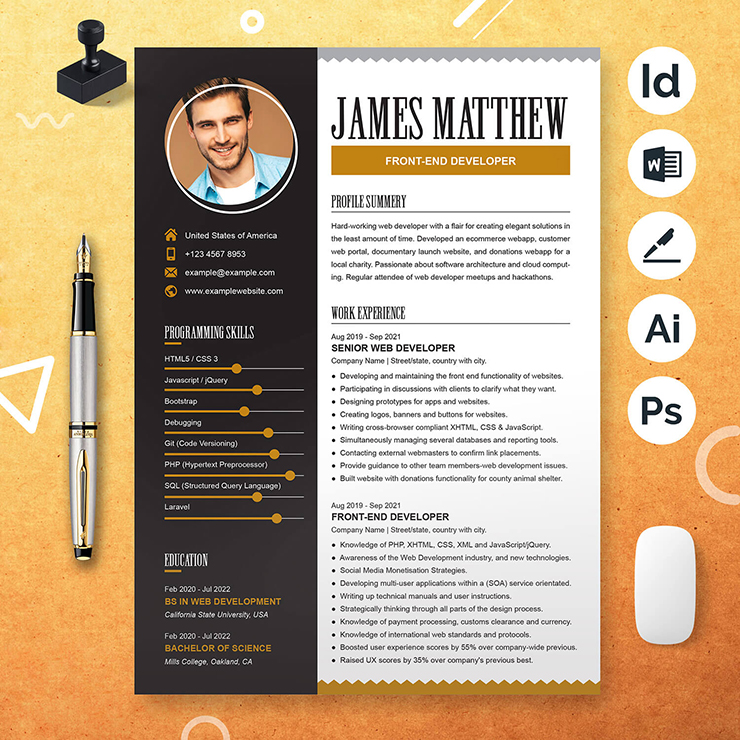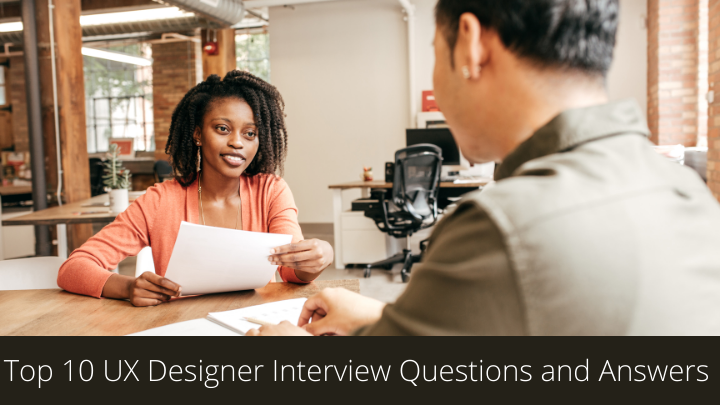
It helps to be aware of some of the most typical inquiries you’ll hear when preparing for a UX designer interview. In this article, we’ll go through 10 of the most typical UX designer interview questions, along with sample responses and interviewing advice, to help you nail your next interview and leave a lasting impression.
Top 10 UX designer interview questions and sample answers
To prepare for your upcoming UX designer interview, use the following sample questions and answers:
1. What value does UX design have?
This question could be asked by the interviewer to find out how you use your design expertise to satisfy user needs. Give instances of your user research, customer journey analysis, and usability testing. You can give the interviewer an idea of how you can benefit their business by demonstrating how you use your abilities to produce user-friendly designs.
Example: “Any business that operates online must have a strong UX design component. As a UX designer, I continually search for the best ways to simplify user experience so that visitors to the website can easily find what they’re searching for. I put a lot of effort into designing for the user experience since I believe that doing so would result in happier clients and bigger business profits.”
2. What makes UX design different from UI design?
The purpose of this question is to gauge how well you comprehend the fundamental duties of user experience and how they differ from those of user interface design. By defining your work as a UX designer and how it relates to that of a UI designer, you may demonstrate to the interviewer your knowledge in UX design. In addition to showcasing your proficiency in UX design, this also shows how well you operate in a team with other experts.
Example: “More functionality is involved in UX design than UI design. Since user experience (UX) is all about how a user feels while engaging with a company’s website, it is my responsibility as a UX designer to develop tools that make it simple and effective for users to explore online material. In my previous position, I collaborated with two UI designers to integrate look and functionality to produce aesthetically pleasing and user-friendly interfaces.”
3. How do you stay up-to-date on new technology and improvements in UX design?
The interviewer might ask you about your approach to professional growth and skill development. Give examples of any ongoing education you pursue, workshops you attend, or other methods you utilize to increase your knowledge of UX design in your response.
Example: “I regularly attend the three-day UXPA International Conference, where I frequently discover fresh approaches to user experience evaluation, research applications, and design methodologies. I also participate actively in a professional UX design group where I can take quick courses on the latest technology, evaluate my present knowledge, and pick up new abilities that I can use right away.”
4. Which resources do you favor when completing projects?
The answer to this query will provide the interviewer with a better picture of the resources and tools you use to do your work well. To demonstrate your analytical abilities, provide instances of how you analyze relevant approaches and sources for accomplishing projects.
Example: “I have a number of essential tools that I employ when developing color schemes, creating animations, and testing prototypes for various digital platforms. I also make use of the ideas from my team, collaborating with UI designers to blend the best functionality with interface layouts. I can create and put into action the greatest designs that satisfy client and corporate goals thanks to these resources.”
5. What has been your most successful UX design?
If the interviewer asks you a question of this nature, they probably want to know how the project was finished and how it benefited your previous employer as a whole. Show off your technical and design expertise in your response, as well as your capacity to collaborate with a design team to meet crucial goals.
Example: “I recently finished a project for a small business that involved essential usability upgrades. The company’s database software was out-of-date, which caused problems when employees used the application for assigned tasks. Since I was able to interact with the company’s team to determine their goals and integrate many of my own design features to satisfy those demands, I view this project as my most successful to date. As a result, a totally new database design was created, streamlining functionality and decreasing the amount of time personnel had to spend using the application.”
6. Can you describe your design process?
Your response to this question can help the interviewer better grasp your capacity for task prioritization and organization. To demonstrate to the interviewer how you organize new projects, plan and outline designs, and evaluate your work, give examples.
Example: “I always plan time to conduct user research and create my design’s information architecture. These procedures assist me in developing the user interface and interaction designs, both of which are essential for making websites and other digital material easy for users to explore and effective. I review and change any areas of the design that require improvement to achieve these goals after putting strategies into place that support both the customer’s and the company’s aims.
7. How do you decide which features to use in your designs?
How you use data to make decisions during the design process may be a topic of discussion during the interview. Give examples of your ability to collaborate with team members, make decisions that result in successful design features that are user-centered, and evaluate features for usability.
Example: “User research plays a significant role in how I choose which features to include in a design. I take into account the target audience, client requirements, and any issues that my design might be able to resolve. I match these variables to the objectives of the business in order to provide designs that benefit both the client and the enterprise. For instance, I created efficient features for my previous company’s website to assist customers with product searches and online purchases. With these objectives
8. Which research methods do you apply when starting a new design?
This query reveals information about your knowledge of data application and research and analysis techniques. Describe how you decide which design approach to use for various projects and the variables that influence your decisions when you begin new designs.
Example: “As a result of my limited resources, I currently mostly rely on user surveys. However, I would adore the opportunity to speak with managers and employees in person more frequently. In order to understand what components can assist business-to-business activities more effectively, one of the most important processes in my research is interviewing users of the designs I’m developing. I also look into different design components that can help organizations achieve their objectives while still being efficient and easy to use for management and employees.
9. What was one project you worked on that didn’t go as planned? What was the outcome?
A question like this one will probably be asked during the interview to find out how well you foresee problems and use problem-solving techniques. Give an example from your own experience, and then describe the project’s difficulties, your methods for resolving them, and the outcomes of your decisions.
Example: The creation of an online shopping platform for a start-up company was one project that caused difficulties. The fact that the design team’s understanding of the user needs was lacking was one of the project’s main obstacles, which delayed the initial development stage and the deployment of design features.
My team and I assigned junior developers to evaluate usability and functionality so that we could focus on more in-depth market and user needs research for the company. We were able to adjust the platform and enhance the overall design and functionality to fulfill client expectations after examining elements that corresponded with our research. After three months of installation, the business saw an increase in revenues because to this solution.
10. How do you collaborate with other designers and developers?
This question aids the interviewer in understanding your teamwork skills because UX designers collaborate with a variety of technical teams. To demonstrate your capacity to cooperate, communicate, and form relationships with people, give examples from your experience that demonstrate these abilities.
Example: “I aim to invent the best methods for providing solutions that fulfill consumer and corporate goals when working with other UX designers and UI designers. When working with software engineers and developers, I usually discuss any opportunities or limits that can help me achieve the things I’ve planned. We usually transform specs into a prototype as a team so that our PMs can approve the final design before implementation.
Tips for succeeding during your interview
The following pointers can help you perform your best in your interview in addition to prepping your responses in advance:
- Research the company and the position. Do some research on the position’s requirements, requirements, and skills. Discover the objectives, methods, and mission of the business. You can explore these talking points during your interview by doing some study beforehand.
- Match your key skills to the job description. When answering questions about your abilities and skills, emphasize the competencies you possess that you are aware the employer is seeking. For important requirements that you can address during the interview, consult the job description.
- Showcase your credentials. Make sure to share your achievements with the interviewer and emphasize the advantages of having earned these qualifications if you have professional certificates in UX design, computer programming, or another area that is relevant.
- Apply the STAR interview response technique. Use the STAR response approach to describe the setting, your role or task in the situation, the actions you took, and the results you achieved when describing experience-based examples in your responses.
Conclusion
We hope you enjoyed our Top 10 UX Designer interview questions and answers blog. As you can see, there are some great questions that you can ask a UX designer in an interview to help you determine if they are the right fit for your company. If you are looking for a new job, or looking to hire a UX designer, we hope this information was helpful to you!
Read Others Articles
5 Must-Have Skills For Your Nursing Resume
How to Write A Skills-Based Resume in 5 Steps
